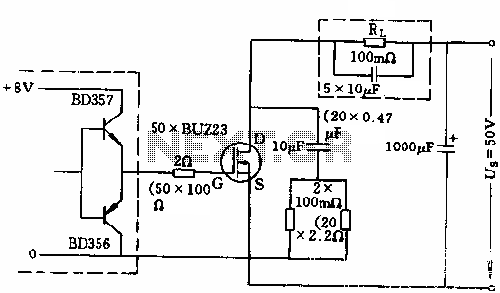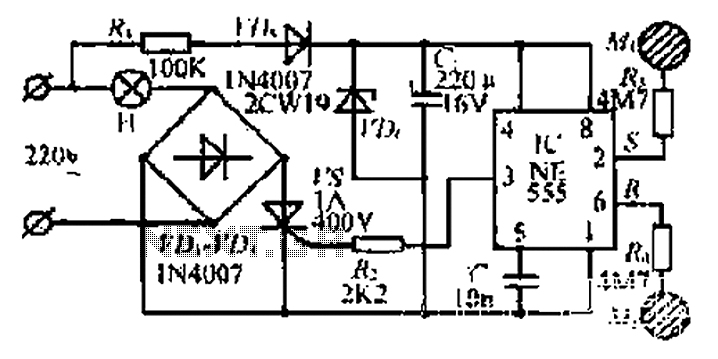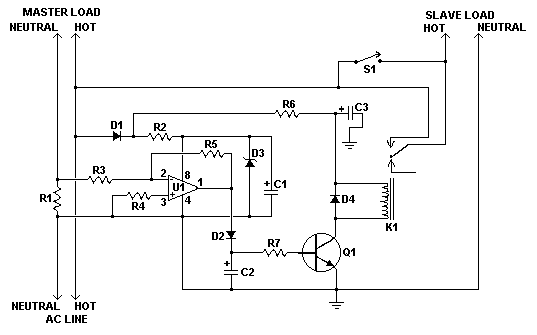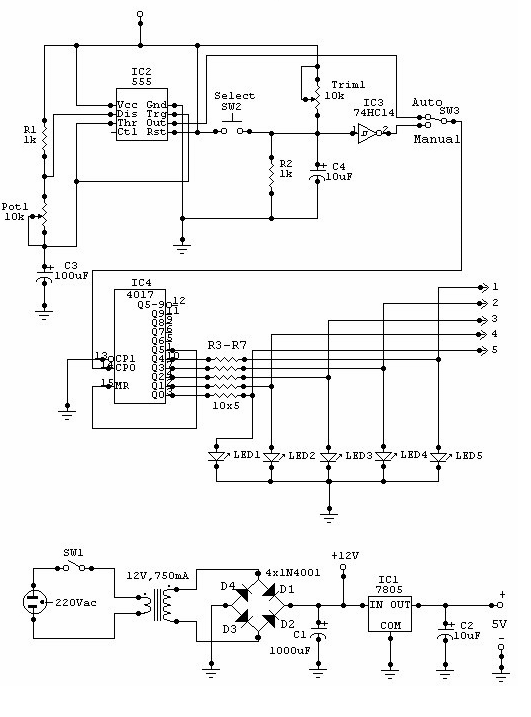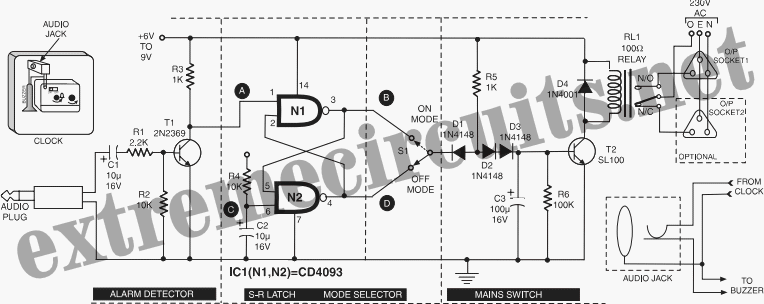
Photoelectric switch
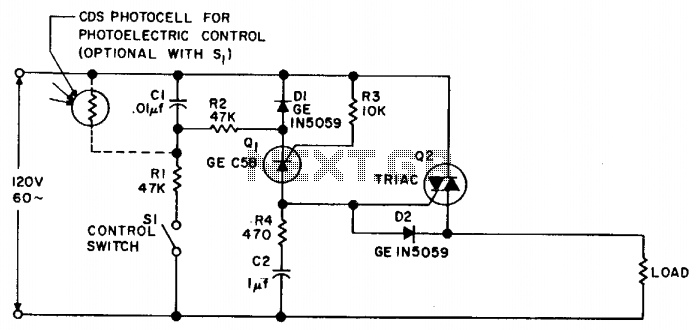
Synchronous switching activates only when the AC supply voltage crosses zero and deactivates only when the current reaches zero. This circuit responds to either a mechanical switch or a variable resistance, such as a cadmium-sulfide photocell. It minimizes disturbances to the power supply during switching and ensures that an integral number of complete cycles is conducted.
It is particularly suitable for applications where radio frequency interference (RFI) and audio filtering are not acceptable, where transformer magnetizing inrush currents can lead to nuisance fuse-blowing, and where sensitive equipment must function near power switches.
Synchronous switching circuits are designed to enhance the efficiency of power management in various electronic applications. The core principle involves precise timing to ensure that switching occurs at zero voltage and current, which minimizes electrical stress and reduces electromagnetic interference. This technique is critical in applications like lighting control systems, motor drives, and power supplies for sensitive electronics.
The circuit typically includes a zero-crossing detector that monitors the AC waveform. This component triggers the switching mechanism, which can be a solid-state relay (SSR) or a thyristor, ensuring that the load is connected or disconnected at the optimal moment. The use of a cadmium-sulfide photocell as a variable resistance allows for light-sensitive applications, enabling automatic adjustments based on ambient light conditions.
In environments where RFI is a concern, synchronous switching circuits improve overall system performance by reducing noise emissions during the switching process. This is particularly important in audio equipment and communication devices, where unwanted interference can degrade performance.
Furthermore, the ability of the circuit to conduct an integral number of cycles is advantageous in preventing sudden inrush currents that can cause fuses to blow or circuit breakers to trip. This feature is especially beneficial in transformer applications, where inrush current can be several times the normal operating current.
Overall, synchronous switching circuits provide a robust solution for managing AC loads with minimal disruption, enhancing both performance and reliability in a wide range of electronic systems.Synchronous switching is turning on only at the instant the ac supply voltage passes through zero, and turning off only when current passes through zero. This circuit provides this function in response to either a mechanical switch or a variable resistance such as a cadmium-sulfide photocell.
This circuit produces the minimum disturbance to the power supply when switching, and always conducts an integral number of whole cycles. It is ideal for use wherever RFI and audio filtering is undesirable, where magnetizing inrush current of transformers causes nuisance fuse-blowing, and where sensitive equipment must operate in the vicinity of power switches.
It is particularly suitable for applications where radio frequency interference (RFI) and audio filtering are not acceptable, where transformer magnetizing inrush currents can lead to nuisance fuse-blowing, and where sensitive equipment must function near power switches.
Synchronous switching circuits are designed to enhance the efficiency of power management in various electronic applications. The core principle involves precise timing to ensure that switching occurs at zero voltage and current, which minimizes electrical stress and reduces electromagnetic interference. This technique is critical in applications like lighting control systems, motor drives, and power supplies for sensitive electronics.
The circuit typically includes a zero-crossing detector that monitors the AC waveform. This component triggers the switching mechanism, which can be a solid-state relay (SSR) or a thyristor, ensuring that the load is connected or disconnected at the optimal moment. The use of a cadmium-sulfide photocell as a variable resistance allows for light-sensitive applications, enabling automatic adjustments based on ambient light conditions.
In environments where RFI is a concern, synchronous switching circuits improve overall system performance by reducing noise emissions during the switching process. This is particularly important in audio equipment and communication devices, where unwanted interference can degrade performance.
Furthermore, the ability of the circuit to conduct an integral number of cycles is advantageous in preventing sudden inrush currents that can cause fuses to blow or circuit breakers to trip. This feature is especially beneficial in transformer applications, where inrush current can be several times the normal operating current.
Overall, synchronous switching circuits provide a robust solution for managing AC loads with minimal disruption, enhancing both performance and reliability in a wide range of electronic systems.Synchronous switching is turning on only at the instant the ac supply voltage passes through zero, and turning off only when current passes through zero. This circuit provides this function in response to either a mechanical switch or a variable resistance such as a cadmium-sulfide photocell.
This circuit produces the minimum disturbance to the power supply when switching, and always conducts an integral number of whole cycles. It is ideal for use wherever RFI and audio filtering is undesirable, where magnetizing inrush current of transformers causes nuisance fuse-blowing, and where sensitive equipment must operate in the vicinity of power switches.
